This vantage viewing point marks the place from where Pachmarhi was discovered by Captain Forsyth in 1857. The British developed Pachmarhi as a resort and their influence is embodied in its churches and colonial architecture.
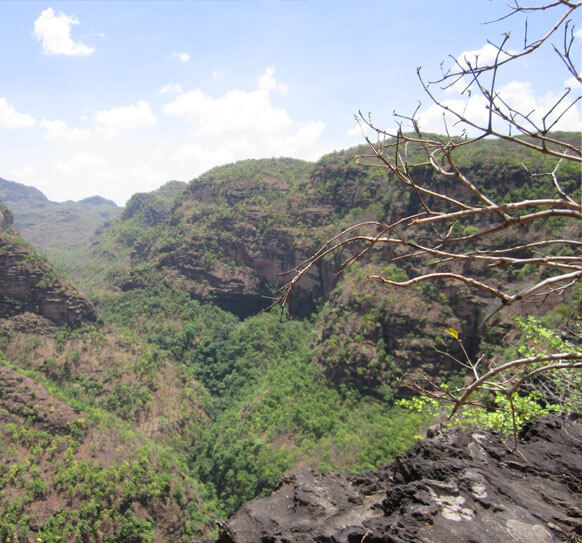

info@mptourandtravels.com
Pachmarhi is a hill station in Madhya Pradesh state of central India, also known for the Pachmarhi Cantonment. It is widely known as "Satpura ki Rani" (Queen of Satpura), situated at a height of 1000 m in a valley of the Satpura Range in Hoshangabad district. The highest point in the central India region and the Vindhya and Satpura range; Dhupgarh at 1130 m is located here.
The area was introduced to western world by Captain James Forsyth of the British Army in 1857. Pachmarhi became a hill station and sanatorium for British troops in the Central Provinces of India. The population in 1901 was 3020, rising to double that number in the hot summer months. Pachmarhi also served as the summer capital for the Central Provinces. The forest around the town is home to many rare varieties of plants. UNESCO added Pachmarhi park to its list of Biosphere Reserves in May 2009.
The town is not very large, and most of the area is under Indian Army's control and lies in Pachmarhi Cantonment, overall population of about 10,000 population, with the majority of it being the Army.
The civilian town is small and towards the tip of a lake. It has some hotels and a movie hall. A bazaar runs through the small town. There is a large swathe under the Army control, which includes the area near the club and the golf course.
A rarely used airstrip is towards Dhupgarh. It is overrun with grass and is seldom used. Tigers are known to have been sighted near the airstrip. Panther sightings are common along the edge of the Pachmarhi Cantonment.
The town has many tourist hotels including the hotel run by Department of Tourism (Govt. of Madhya Pradesh). Private resorts and cottage/hotel facilities are also available.
There is also a Bharath Scouts and Guides camping site about 4 km from the main town.

This vantage viewing point marks the place from where Pachmarhi was discovered by Captain Forsyth in 1857. The British developed Pachmarhi as a resort and their influence is embodied in its churches and colonial architecture.
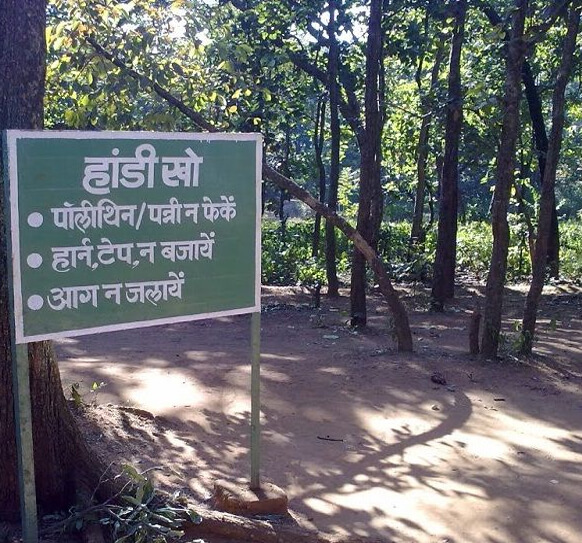
Pachmarhi's most impressive ravine has a 300 feet high precipice and dramatically steep sides.
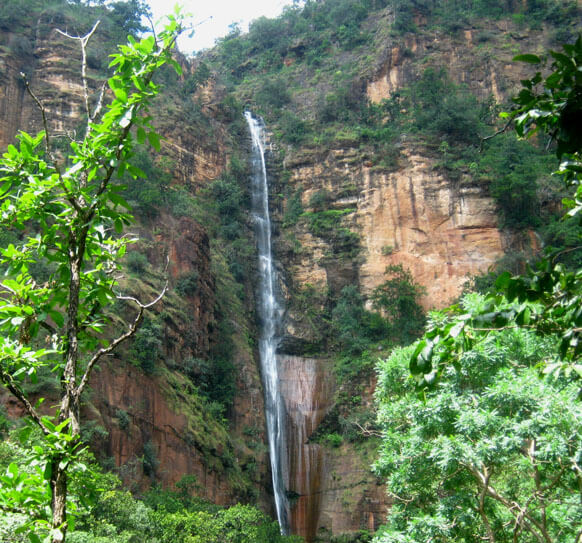
Those seeking adventure will find it in this ten-minute walk over rocks and boulders from Apsara Vihar to the top of Rajat Prapat, the 'big fall'.
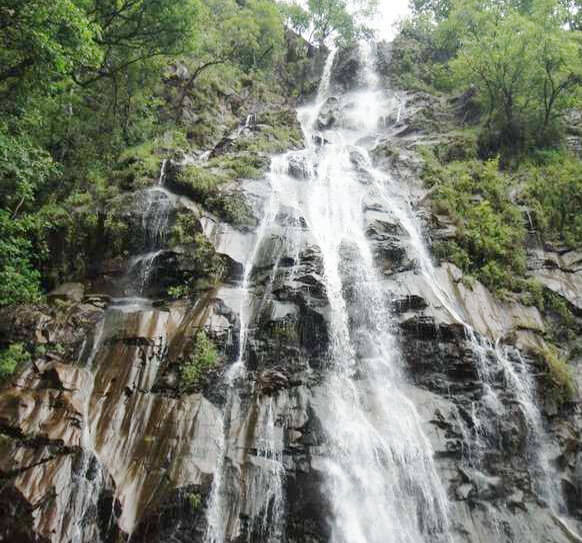
spectacular fall in the stream which provides drinking water to Pachmarhi. The bathing pools above the fall are very popular. Bees fall is hardly 2 km. from Jaistambha. This water-stream flows and jumps into the valley to make one of the most beautiful waterfalls of Pachmarhi. Fall makes a sound like thousands of Bees are singing and accordingly called Bees Fall. This spectacular fall leaves long-lasting memory when one stays under its cold, fresh and pure water coming directly from the height of 100 ft. and feel it stroking soothingly on his head.
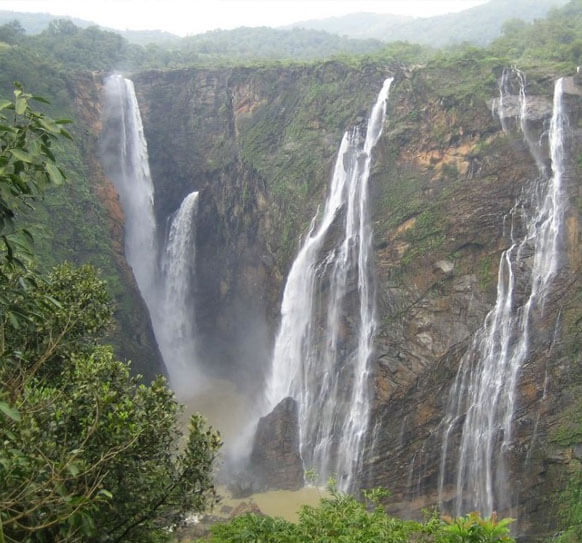
Easily accessible from Jai Stambh, this 'fairy pool' is an ideal picnic spot for families with small children, since the pool is shallow, deepening only towards the base of the fall. From Jaistambha reach Pandava Caves and from there, drive less than 1 km. One has to do trekking of 2 km. on hilly tracks. Britishers named this place 'Fairy Pool'. It is an ideal picnic spot. A small charming water-fall of 30 ft. height makes the pool. One must be careful about children and non-swimmers here. Swimmers can enjoy swimming and diving in this natural swimming-pool.
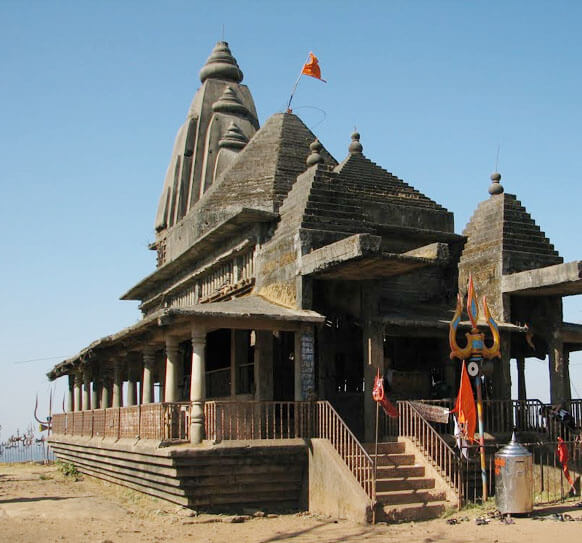
4 kms from Mahadeo, it is one of Satpura's prominent land marks, the summit crowned with emblems of Mahadeo worship. Chouragarh is 1316 m. above mean sea level. It is nearly 3 km. from Bada Mahadeo. To reach the top one has to walk and climb nearly 1,250 steps. The top is nearly 240 m. long and wide. As an offering to Lord Shiva thousands of Trishuls (Tridents) are put by devotees on the top, some of which weigh around 3 to 4 quintals. A new temple of Lord Shiva is constructed on the top of Chouragarh. Chouragarh presents charming panoramic scenes in all directions of dense forests, hills and valleys. Story of Bhasmasur is mythologically associated with Bada Mahadeo, Chouragarh and Jatashankar.
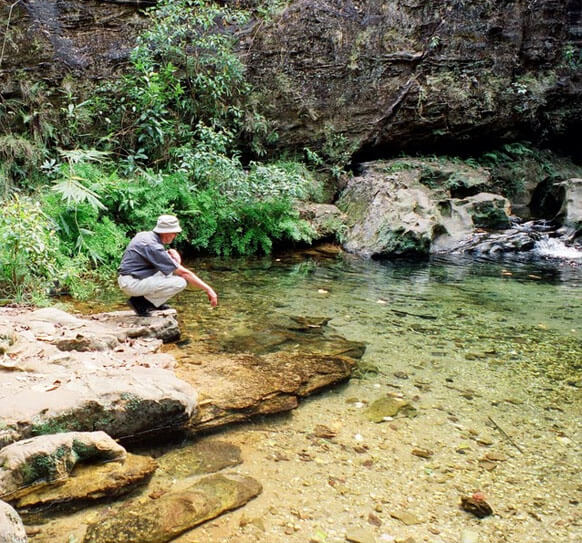
This pool was discovered by Irene Bose, wife of Justice Vivian Bose, and named after her. The route upstream leads to a cave, through which the stream goes underground and then over a khud in a series of falls.
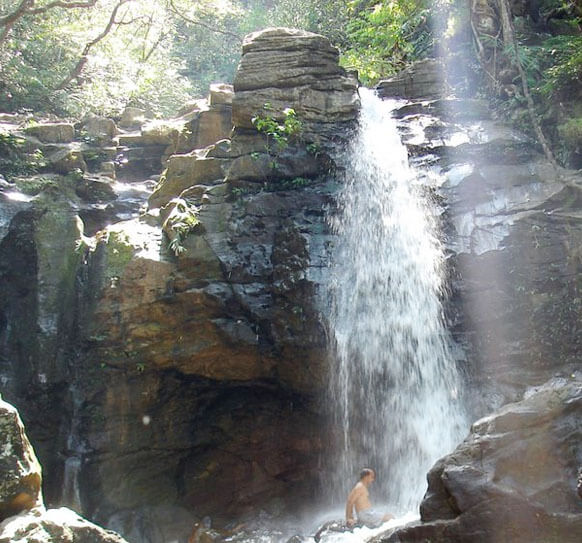
The descent is steep and the trek strenuous for almost all of the 4 km to the base of the fall's first cascade.
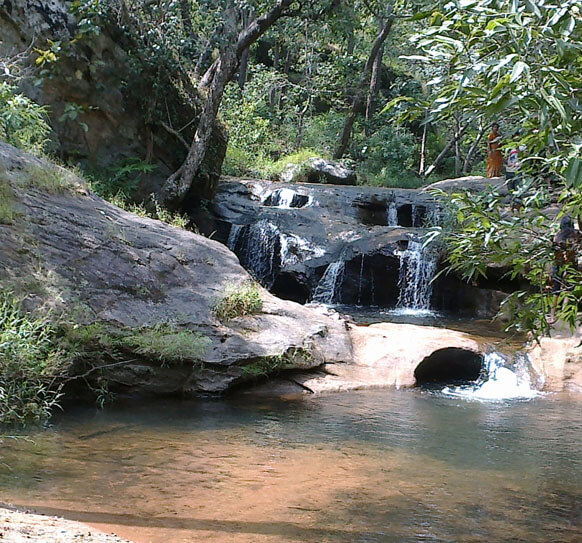
Crossing the stream below Duchess Fall and following a footpath about 2.5 km in a south- west direction, brings one to a huge rocky pool that is excellent for a refreshing swim.
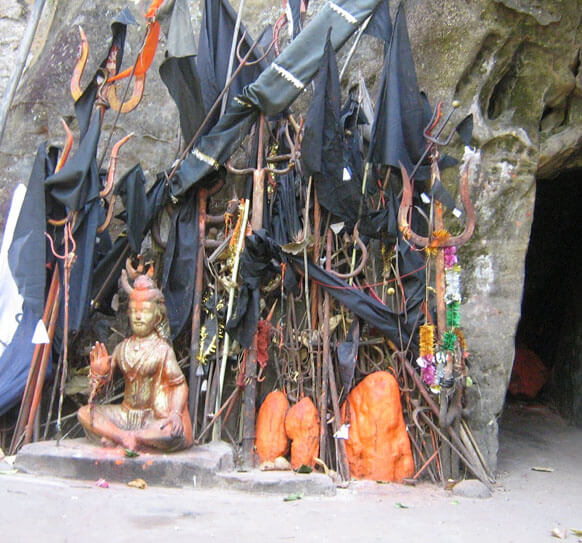
Regarded as holy for countless of generations, Mahadeo hill has a shrine with an idol of Lord Shiva and an impressive Shivlinga. On the East side of the hill is an excellent cave shelter with beautiful cave paintings.
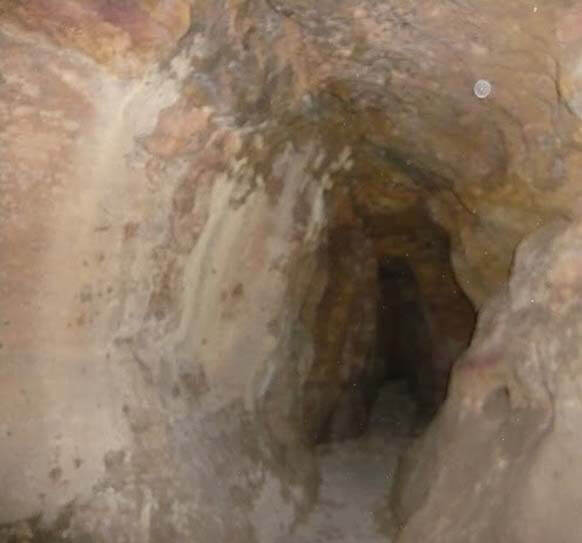
Revered as a sacred spot, this is a narrow point in the valley with rocks overhanging a stream and a spring from where water cascades down.

Constructed in 1862, the Bison Lodge is the oldest house in Pachmarhi. It now houses a beautiful museum depicting the rich flora and fauna of Pachmarhi.
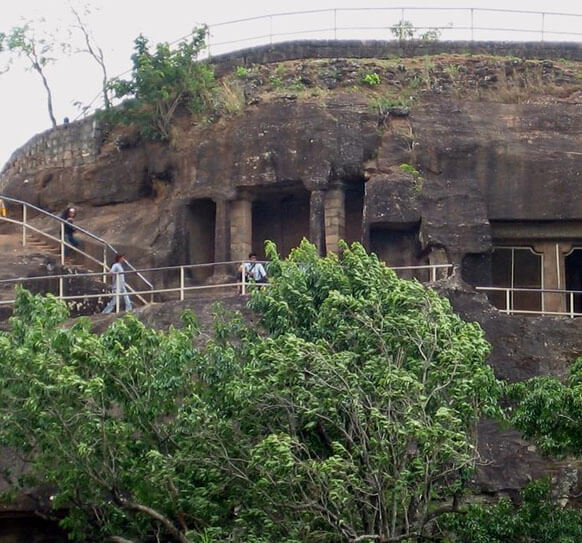
Five ancient dwellings excavated in the sandstone rock in a low hill. Pachmarhi derives its name from these caves which, as the legend goes, once provided sanctuary to the five Pandav brothers. These caves are now protected monuments.
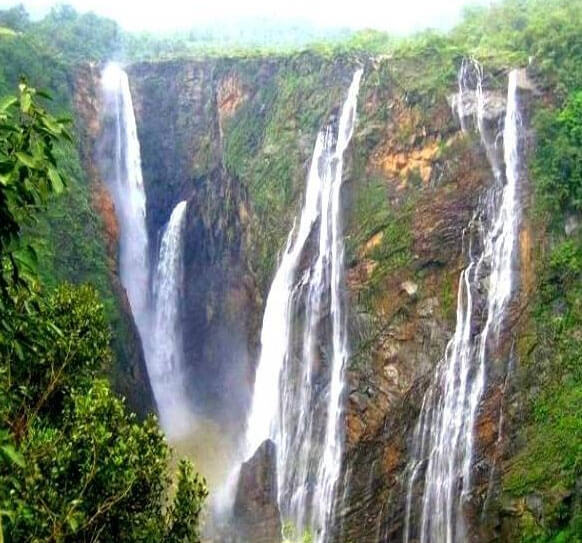
A popular picnic spot where two streams meet in a junction.
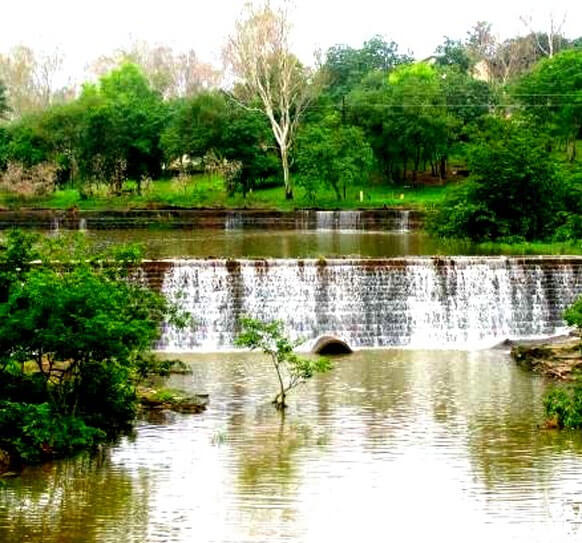
A beautiful spot on the Denwa stream, cool and shady among trees, ferns and semi-tropical vegetation.
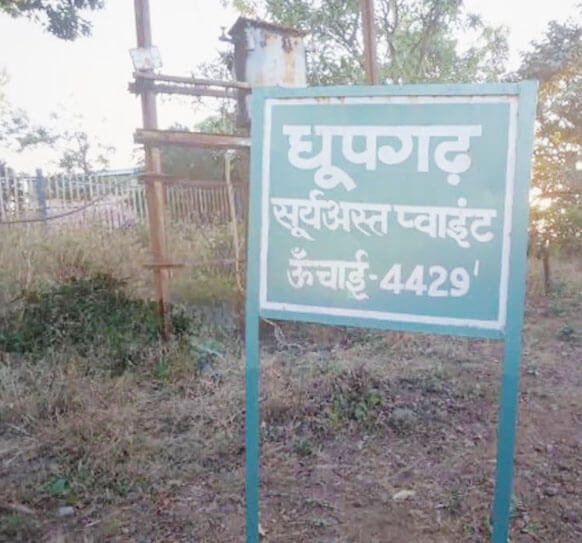
The highest point in the Satpura range, with a magnificent view of the surrounding ranges. A very popular spot for viewing sunsets Dhoopgarh is the highest peak of Satpura ranges at the altitude of 1359 m. (4,429 ft.) above mean sea level. Expert driving on hills is essentially required to reach the top. Hill-hikers can prefer route from foothill which is hardly 15 minutes job for youngsters and healthy persons. The highest peak is known as 'Elephant' or 'Hathi Shikhar'. This is a place from where one can watch beautiful views, depthness of nature, greenery of dense forests, serpent-shaped jungle paths sleeping like huge dragon and lucky persons may see group of 'Bisons' roaming in bamboo forests. From the top of Dhoopgarh Tourists are shown sunrise from eastern end and sunset from western end. Elephant or Hathi Shikhar (highest peak) covers almost whole of the Pachmarhi on its canvas. Towards east the Pachmarhi town seems to lie sleepishly and the view to the west looking over Bori Valley, Betul Hills, and distant sight of dam on River Tawa is especially beautiful. One can have fantastic moods of nature, all scenic beauty, and cool breeze with fragrance in its purest form. Two hours stay at evening, will definitely show so many shades of nature, which are beyond description in words and can only be felt..
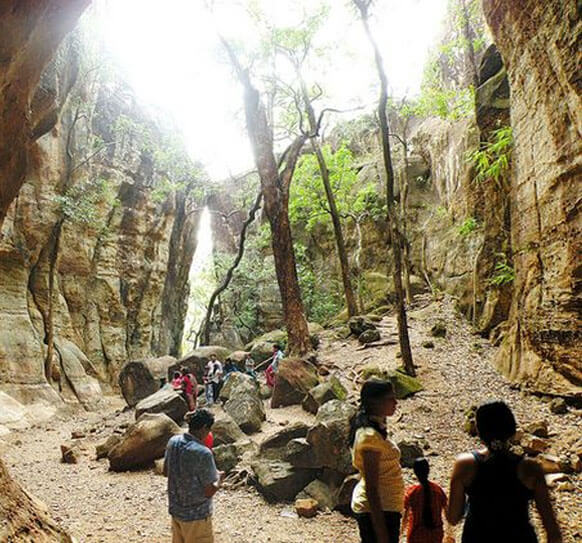
A wonderful natural amphitheater in the rock, approached through a cave-like entrance on the South-side.
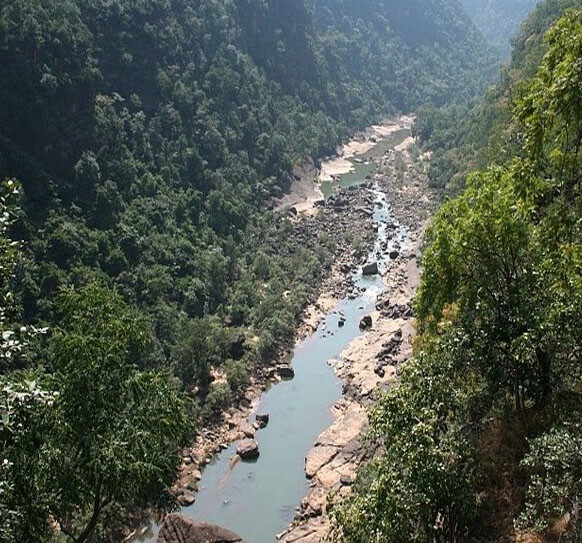
This is the lowest of the picnic spots on the Denwa and offers fairly good bathing pools both below and above the meeting of the waters.
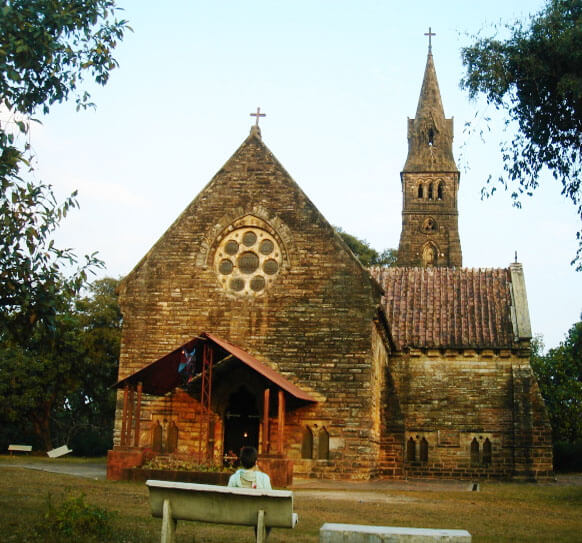
Catholic Church Built in 1892 by the British, the Catholic Church is a blend of the French and Irish architecture. Its Belgium stained-glass windows add rare attraction and beauty to the building. The church has a cemetery attached to it and graves date from 1859, World War I & II.
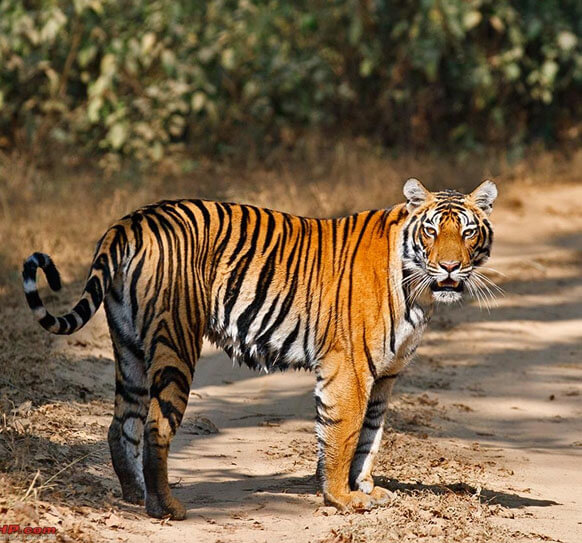
Set up in 1981, Satpura National Park is 524 sq km in area. It spreads through dense forest of evergreen sal, teak and bamboo. The high peaks of Dhoopgarh and Mahadeo, Bori's legendary teak and bamboo forests, Pachmarhi's fascinating natural beauty of deep valleys, high mountains, rivulets, waterfalls and Tawa's vast reservoir combine to give this park unique beauty and a breathtaking variety of attractions. The park is home to the bison, tiger, Leopard, bear, four-horned deer, blue-bull and a rich variety of birds.
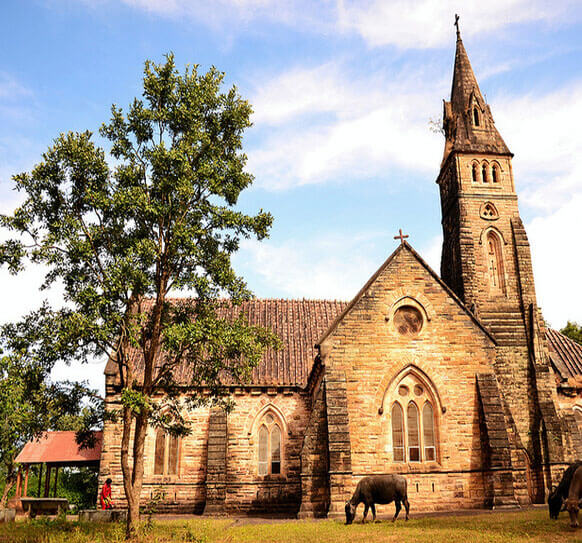
Built in 1875 by the British, this Church's architecture is fascinating; its 'sanctum-sanctorum' has a hemispherical dome on top with its ribs ending with faces of angels. The stained glass panes adorning the walls and rear of the altar were imported from Europe. They present a gorgeous view as the sun rays pass through them. The nave of the church does not contain even a single pillar for support. The baptismal font is a rare brass piece and the bell is as old as the church and its chimes can be heard from a long distance.
Some of the best cave shelters and groups of shelters around Pachmarhi are: Dhuandhar, approached from the footpath to Apsara Vihar, the paintings mostly in white include a group of archers with the typical Gond bun and hooped earrings. Bharat Neer (Dorothy Deep), has well executed animal paintings and when excavated in the 1930s yielded many pottery shards and microliths. Asthachal (Monte Rosa), there are four shelters with paintings, comparatively early linear drawings.
Along the northern side of Jambu Dwip valley are some six shelters with many paintings of animals and human figures, including a detailed battle scene.
Harper's Cave, so named because of one of its paintings - a man seated and playing a harp is close to the Jata Shankar Shrine. The Chieftain's Cave derives its name from a battle scene showing two chieftains on horses. A terrace that runs the length of the South, South East and East faces of Kites Crag has some fine cave paintings, the majority of which are in white or outlined in red.
Important Note: While visiting Pachmarhi's beautiful spots, please avoid littering. Carry back with you all empty plastic bags and other trash and leave every point as you found it, spotlessly clean.